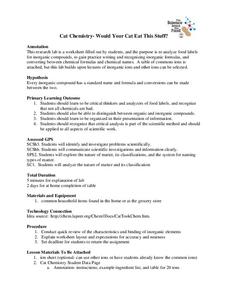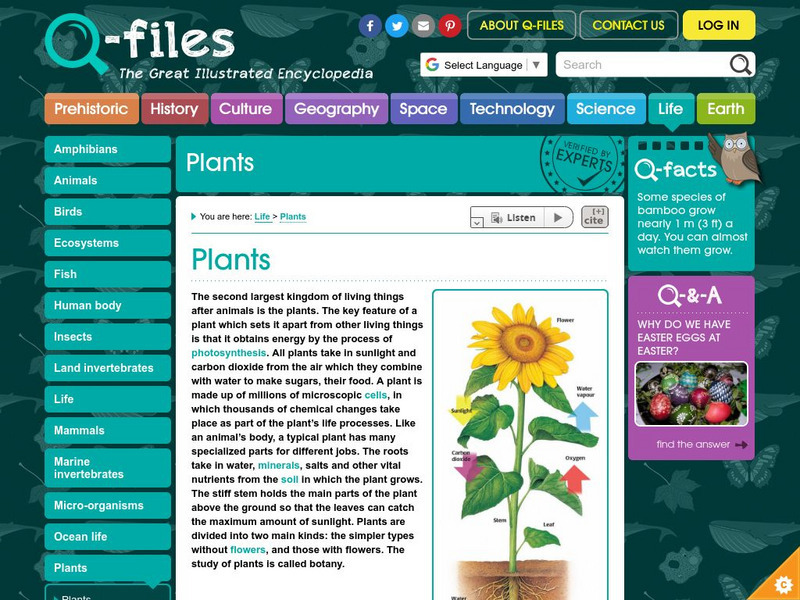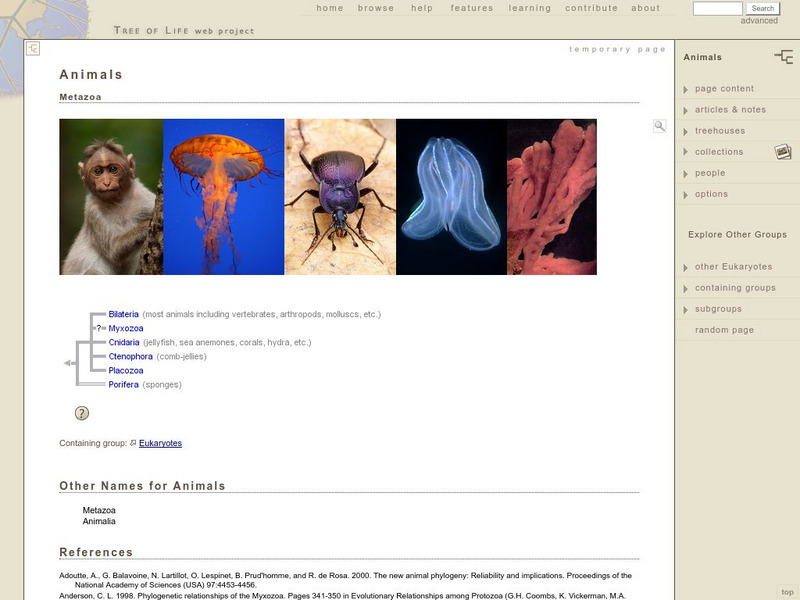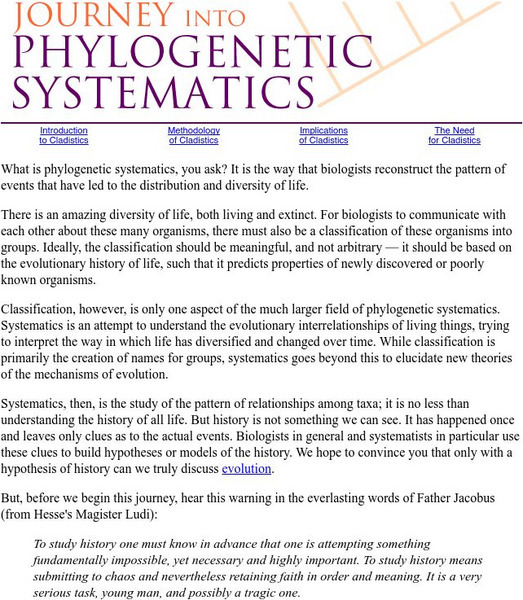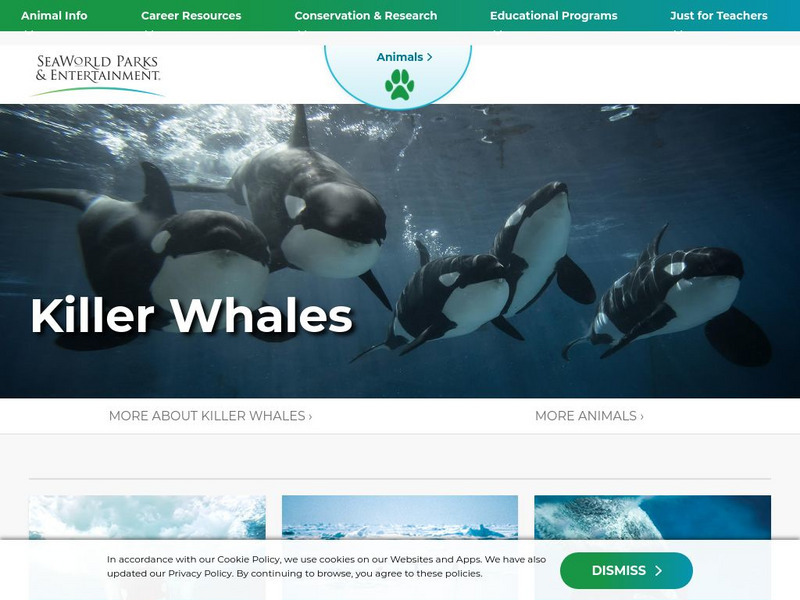McGraw Hill
Arthropods
Are spiders related to crabs? Study the order of arthropods with a reading selection about animal diversity. It provides details about each class within the order, as well as vivid pictures and explanatory charts.
National Institute of Open Schooling
Biomolecules
An informative lesson has learners read about, discuss, and study the classification, structure and importance of the following biomolecules: carbohydrates, proteins, lipids, nucleic acids, and enzymes.
University of Georgia
Would Your Cat Eat This Stuff?
Processed foods use inorganic compounds for flavoring and preservation. This take-home laboratory challenges scholars to find 20 different compounds identified on the labels of foods to list on their data collection sheet. The activity...
BBC
Bbc Nature: Prehistoric Life: Tyrannosaurus Rex
Explore the exciting world of the killer dinosaur, Tyrannosaurus Rex, by learning about its behaviors, geological time periods, and classification through descriptions, videos, photos, news, and external links.
BBC
Bbc Nature: Prehistoric Life: Woolly Mammoth
Explore the exciting world of the woolly mammoth by discovering facts about its behaviors, habitats, geological time periods, and classification through news, photos, videos, descriptions, and external links.
Other
Cc: A Classification System for Mosquito Life Cycles
An in-depth discussion on the classification systems of mosquitos: discusses the classification of Bates and Pratt and proposes a new classification system.
Other
Southwest Tennessee Community College: Classification of Organisms
College-level instructor's notes describing taxonomy. Explanations and images give a chronological history of the science of classifying organisms.
CK-12 Foundation
Ck 12: Earth Science: Life Cycle and Classification of Stars Study Guide
[Free Registration/Login may be required to access all resource tools.] This study guide summarizes key points about types of stars and he life cycle of a star. Includes a few questions to check for understanding.
Wonderville Media
Wonderville: Deep Sea Creatures
We all know that the ocean is home to many beautiful and mysterious creatures. Mysterious cannot begin to describe the fish living in the depths of the ocean. Imagine the kind of creature that lives thousands of feet underwater! Sunlight...
Orpheus Books
Q Files: Life: Plants
Explore the world of plants and all that encompasses the second biggest kingdom of classification.
Other
Sea and Sky: Marine Reptiles
An informative site from Sea and Sky that contains basic characteristics along with a number of beautiful pictures of the common marine reptiles.
BiologyWise
Biology Wise: Three Domains of Life
Describes the characteristics of Archaea, Bacteria, and Eukarya, the three domains of life.
Other
Panhandle Area Educational Consortium: The Six Kingdoms of Life [Pdf]
Scientists look at the evolutionary history of organisms to divide them into kingdoms. For awhile, there has been 5 kingdoms, but many scientist are now using 6 kingdoms.
San Diego Zoo Global
San Diego Zoo: Butterflies
An in-depth description of butterflies, with information about their classification, appearance, habitat, adaptations, reproduction, diet, and other interesting facts. Also includes pictures. [3:17]
NOAA
Noaa: The National Marine Mammal Laboratory: Leopard Seals
Resource provides information about leopard seals, such as habitat, classification, diet, etc.
Science Struck
Science Struck: Life Cycle of a Tornado
Describes the three stages of a tornado's life cycle.
BBC
Bbc Nature: Prehistoric Life: Woolly Rhinoceros
Go on a journey with the extinct woolly rhino and learn about its behaviors, habitat, classification, and body structure.
BBC
Bbc Nature: Prehistoric Life: Sabre Toothed Tigers
Learn about the saber-toothed tiger and discover details about this prehistoric cat's behaviors, habitat, classification, and body structure through short videos and reading.
Tree of Life Project
The Tree of Life Web Project: Animals
Extensive site that contains much information about the various animal phyla. Each phyla gives photos, common examples, scientific names and references. Collection of 1630 websites about bio-diversity.
University of California
Ucmp: Phylogenetic Systematics: Evolutionary Trees
This page provides an introduction to phylogenetic systematics, the way that biologists reconstruct the pattern of events that have led to the distribution and diversity of life. A tutorial "journey" into the Introduction, Methodology,...
The Franklin Institute
The Franklin Institute: Living Things Families
What do centipedes and crabs have in common? What's so special about a backbone? Check this site out from The Franklin Institute if you are interested in biology and classification.
Encyclopedia of Earth
Encyclopedia of Earth: Microbiology: Virus
Article explaining what viruses are, their evolution, taxonomy, morphology, and replication. Also covers mechanisms by which viruses cause disease, how they can impact on plants, and the potential and real benefits we get from...
Sea World Parks & Entertainment
Sea World: Bottlenose Dolphins
Outlines the characteristics of the bottlenose dolphin, including classification, habitat, behaviors, and conservation.
Sea World Parks & Entertainment
Sea World: Killer Whales
Outlines the characteristics of the killer whale, including classification, habitat, behaviors, and conservation. Helps students identify with whales with a list of "Books for Young Readers." Information at a level of upper intermediate...


